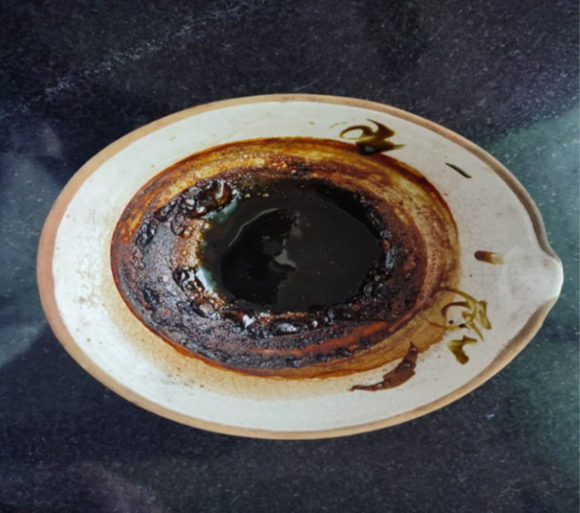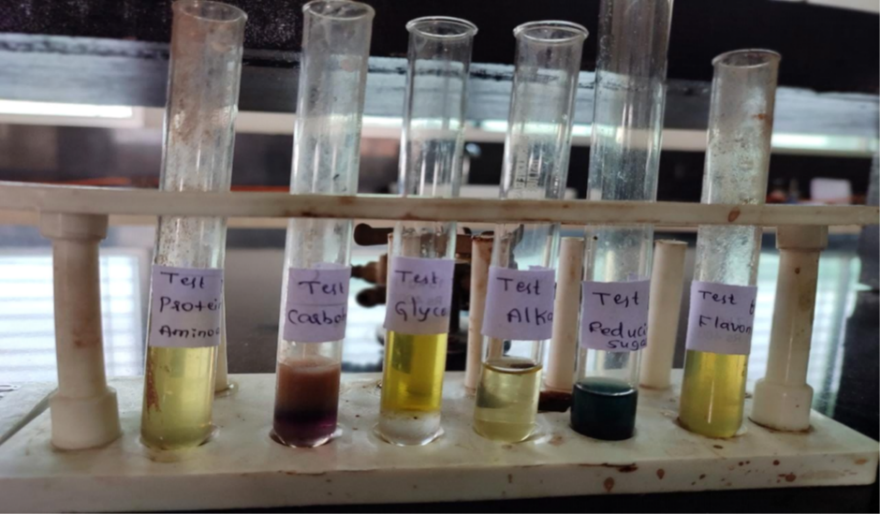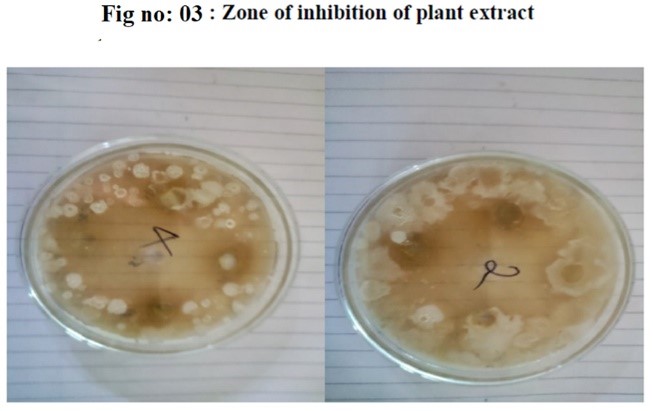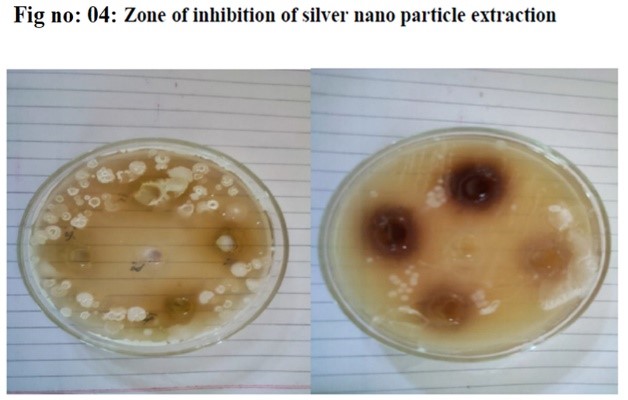In the present study the aqueous extract of the leaves of Ruta graveolens plant was investigated for its phytochemical constituents. The extract was used to synthesize silver nanoparticles and the comparative antibacterial efficacy of the extract as well as silver nanoparticles were evaluated against two micro-organisms using agar diffusion method. Microorganisms selected were Acinetobactor baumannii and Enterococcus. Results showed that the aqueous extract of the leaves contained alkaloids, carbohydrates, tannins, flavonoids, reducing sugar, proteins and phytosterols. Comparative evaluation of the antibacterial efficacy revealed that the synthesized silver nanoparticles exhibited more efficacy with maximum zone of inhibition ranging from 20-35mm were as the zones of inhibition ranging of the extract was found to be in the range of 2-20mm.
Anti-microbial, Ruta graveolens, silver nanoparticles, zone of inhibition
Herbal treatment is a practice that includes herbs, herbal material, and preparations that contain parts of plants or combinations thereof as active ingredients. These herbs are derived from plant parts such as leaves, bark, flowers, roots, fruits, and seeds. Herbal medicines that utilize plant extracts are increasingly used to treat wide range of diseases, through very little knowledge about the mode of action of these plants is known.
Novel metal nanoparticles such as silver and gold have obtained increased interest because of their multipurpose applications in several fields such as biology, medicine, and industry. The physiochemical properties of silver nanoparticles (AgNPs) made them get special attention. Nanoparticles can be prepared by chemical and physical methods, but green synthesis using plant, yeast, bacteria, and fungi got more attention because it is nontoxic, clean, and ecofriendly. AgNPs have many biological properties such as anticancer, antimicrobial, antifungal, antiviral, anti-inflammatory, antiparasitic, and insecticidal potentials. In addition, silver nanoparticles have been used in the industries such as in paint, detergent, clothing, and pharmaceutical preparations. Preparation of nanoparticles using a plant extract is valuable due to the ease of preparation methods with low biohazardous contents.1
Silver nanoparticles produced by Ruta graveolens were shown to have many characteristics that include antibacterial, antifungal, dye degradation, antiviral, and sun protection factor.
Medicinal plants have two types of metabolites one of which is primary and another secondary. Primary metabolites are involved in all process directly but secondary metabolites do not involve directly into metabolic processes. It can increase all metabolic and catabolic reaction.2
Phytochemicals are secondary metabolites of plants. The qualitative and quantitative distribution differ from plant to plant and part to part. Phytochemicals plays major role in preventing the development of chronic disease. Major phytochemicals like phenolic acids, flavonoids, lignans, sterols, vitamin E shows health benefits. These are the important source of microbicidal, pesticides and many pharmaceutical drugs. From decades a medicinal plant that is their secondary metabolites are playing an important role directly or indirectly in the management of many diseases. The secondary metabolites are commercially used as biologically active compounds. The phytochemicals can be screened for different types of biological activity. Secondary metabolites or phytochemicals are compounds synthesized in plants are not essential for the normal functioning of the plant, but they do have a beneficial effect on health or play an active role in checking the diseases. The phytochemical constituent of a plant will often determine the physiological action on the human body. Plant based drugs contain a mixture of multiple components, thereby saving considerable time and expense. Secondary metabolites have no definite function in plants primary metabolites, but often have an ecological role as pollinator attractants, represent chemical adaptations to environmental stresses or serve as chemical defence against microorganisms, insects and higher predators and even other plants. Secondary metabolites are often found accumulated by plants in smaller quantities than the primary metabolites. From decades, the secondary metabolites of plants are playing an important role directly or indirectly in the management of many diseases. These are generally high value low volume products than the primary metabolites.
These are the important sources of microbicides, pesticides and many pharmaceutical drugs. Even though pharmaceutical industries have produced a number of new antibiotics in the last three decades, resistance to these drugs by microorganisms has increased. In general, bacteria have the genetic ability to transmit and acquire resistance to drugs, which are utilized as therapeutic agents. Such a fact is cause for concern, because of the number of patients in hospitals who have suppressed immunity, and due to new bacterial strains, which are multi-resistant. Consequently, new infections can occur in hospitals resulting in high mortality.
The use of plant extracts and phytochemicals, both with known antimicrobial properties, can be of great significance in therapeutic treatments. In the last few years, a number of studies have been conducted in different countries to prove such efficiency. Many plants have been used because of their antimicrobial traits, which are due to compounds synthesized in the secondary metabolism of the plant. These products are known by their active substances, for example, the phenolic compounds which are part of the essential oils, as well as in tannin.3
Ruta graveolens L., is a odoriferous herb belonging to the family Rutaceae. It is the source of Rue or Rue oil, called as sadab or satab in hindi. It is distributed throughout the world and cultivated as a medicinal and ornamental herb. The ancient Greeks and romans, held the plant in high esteem. This plant is cultivated as a decorative plant and is used in traditional medicine for treating many disorders such as hypertension cramps to hysteria, edema, helminthes, skin conditions, gastrointestinal disorders, womb disorders. It is also used as a toxin antidote and insect repellent; as a diuretic, antipyretic, anticancer, antifungal, antibacterial, purgative, anti-parasitic, antioxidant, and hypotensive agent and against epilepsy.4
In the present study the aqueous leaf extract of Ruta graveolens were subjected to phytochemical screening. The silver nanoparticles of the extract were synthesized and comparative antimicrobial effect of the extract and silver nanoparticles were evaluated.
REVIEW OF LITERATURE
Ruta graveolens (genus Ruta), belongs to the family Rutaceae, native to Eurasia and the Canary Islands. Common rue (R. graveolens) is cultivated as a small garden shrub for its evergreen leaves and dull-yellow flower clusters. The gland-studded, translucent leaves have been used for centuries as a spice and in traditional medicines. Ruta graveolens species are evergreen and typically are strongly aromatic. The feathery, pinnately compound leaves usually have two or three leaflets and are often gray-green or blue-green in colour. The yellow flowers, borne in clusters, produce lobed capsules with numerous seeds.5
Taxonomy:
Kingdom : Plantae
Division : Tracheophyta
Subdivision : Spermatophytina
Class : Magnoliopsida
Order : Sapindales
Family : Rutaceae
Genus : Ruta. L
Specie : Ruta graveolens
Vernacular names:
English : Ruta graveolens, Rue
Hindi : Sadab, Satab
Telugu : Aradu Sadapu
Tamil : Aruvatham Pachai
Malayalam : Arutha
Kannada : Nagadale
Konkani : Sitaba
Marathi : Shadkosh
Sanskrit : Sudapa
Key identification features
Ruta graveolens L., is a perennial, scented and glabrous herb or a sub-shrub. Stem is slender, smooth, pale glaucous green and reaches up to a meter in height. Leaves are alternate, gland-dotted, glaucous, compound, 2-3 pinnate. Leaf-lets are linear-oval or oblong.7
Description of the plant
Ruta graveolens L., is a strongly odoriferous evergreen herb or a small shrub belong to the family Rutaceae. They are hairless herbs. They have smooth or undulate but not fringed petals. The pericycle in stem usually contain small isolated strands or bundles of sclerenchyma, vessels are arranged in less pronounced radial rows, pith cells are homogenous and clustered crystals of calcium are abundant in the cortex and or pith. Petiole has an arc of separate bundles, a characteristic feature of Ruta graveolens not observed in any other species of the family. In leaves, glandular trichomes and sunken stomata are present on both surfaces and hypoderm are present.8
Ruta graveolens L. is widely distributed through the Mediterranean region of the Peninsula. It occurs on most any kind of soil, frequently on disturbed areas near houses or roads. Ruta graveolens L. is also cultivated in Spain, although its range originally extended from the Balkans to Turkey.9 Ruta graveolens is locally distributed in regions of Kodagu, Bangalore, Mysore and Hassan districts. The leaves of the plant contains alkaloids, amino acids and proteins, anthraquinones, carbohydrates, cardiac glycocides, flavonoids, phenols, saponins, tannins, and terpenoids.10
MATERIALS AND METHODS
1) Collection of plant material
The leaves of Ruta graveolens were collected from the shrubs present in the region of Kodagu, Karnataka, India. The plant was authenticated by the department of Pharmacognosy, Farooqia College of Pharmacy, Mysore, Karnataka.
2) Preparation of plant extract
Fresh Ruta graveolens leaves were collected from Kodagu (Karnataka, India) and used for the preparation of aqueous extract. The collected leaves were rinsed with distilled water after extensive washing using tap water. The extract was prepared by trituration method using 300ml of distilled water this was followed by maceration. The extract was filtered for 2-3 times through nylon mesh, and used for further experiments.
3) Phytochemical analysis
Different phytochemical tests were conducted for extract of plant to determine the presence and absence of various phytochemical constituents as per the standard methods. 0.5gm of the extract was dissolved in 10ml of DMSO and shaken well. Later the solution were use to perform various phytochemical test like test for alkaloids, terpenes, carbohydrates, reducing sugars, tannins, flavonoids, glycosides, phenols, saponins and proteins.
4) Green synthesis of silver nanoparticles16
0.01M aqueous solution of silver nitrate was prepared and used for synthesis of nanoparticles. To prepare 50ml of 0.01M solution, 0.084g of silver nitrate was added to 50ml of distilled water.
Procedure
To 5ml 0.01M aqueous solution of silver nitrate 5ml of Ruta graveolens leaf extract was added at ambient condition to react and further incubated at 60C for 24hrs. After the colour change of reaction mixtures is observed as dark brown which indicates the formation of green synthesized nanoparticle.
5) Antimicrobial screening
Standardization of antimicrobial procedure using standard antibiotic
The in-vivo antimicrobial activity by agar diffusion method was standardized by using ampicillin as a standard.
a) Preparation of standard inoculums.
MC Farland Constants:
A chemically induced precipitation reaction can be used to approximate the turbidity of a bacterial suspension which is produced by the interaction of barium chloride with
sulfuric acid.
b) Procedure for Agar diffusion method.
• A Stock solution of ampicillin in the concentration of 40mg/ml was prepared in the sterile water.
• Agar plates were prepared using sterile Muller Hilton agar medium in water.
• Inoculum was prepared by suspending a sing isolated colony in about 5ml of sterile water to approximzte density of 0.5,1 turbidity standards respectively.
• A sterile cotton swab was moistened in the adjusted inoculum suspension and the surface of Muller Hilton agar plates were streaked in different direction so as to cover the entire surface.
• Using flamed sterile borer, the medium was bored and the standard antibiotic was added in each bore.
• The plates were incubated at 37?C for 24 hrs until sufficient growth has occurred.
• The plates were observed after 24hrs of incubation for uniform growth characteristics from which clear zones could be read of.
c) Antimicrobial screening of extracts and nano particles
The extracts of leaves and nano particles were subjected to standardized antimicrobial screening procedure separately by agar diffusion method.
All the extracts were prepared in the concentration of 0.2,0.4,0.6,0.8mg/ml dissolved in DMSO and tested against the selected two organisms Viz-Acinetobacter and Enterococcus.
RESULTS AND DISCUSSION
1) Collection of plant
The plant Ruta graveolens were identified and collected from Kodagu, Karnataka.
2) Extraction
The extraction process was carried out and weight of the extract was found to be 21.85g. It was stored in air tight container in a cool place. Percentage extractive value was found to be 21.85%.

Fig No: 01: Concentrated extract after evaporation
3) Preliminary phytochemical screening
Phytochemical screening of the leaf extract of Ruta graveolens revealed the presence of alkaloids, carbohydrates, flavonoids, reducing sugar, tannins, saponins and phenols. Results are tabulated in Table:1 and Figure:2.
Table:1. Phytochemical analysis of aqueous leaf extract
|
Phyto compounds
|
Test
|
Result
|
|
Alkaloids
|
Mayers test
|
+
|
|
Lipids
|
Salkowski test
|
+
|
|
Carbohydrates
|
Molisch’s test
|
+
|
|
Reducing sugar
|
Fehlings test
|
+
|
|
Tannins
|
Ferric chloride test
|
+
|
|
Flavonoids
|
Shinoda test
|
+
|
|
Anthraquinone glycosides
|
Borntragers test
|
--
|
|
Proteins
|
Millons test
|
--
|
|
Saponins
|
Foam test
|
+
|


 Zeeshan Afsar*
Zeeshan Afsar*
 Nethaji R
Nethaji R




 10.5281/zenodo.14486132
10.5281/zenodo.14486132